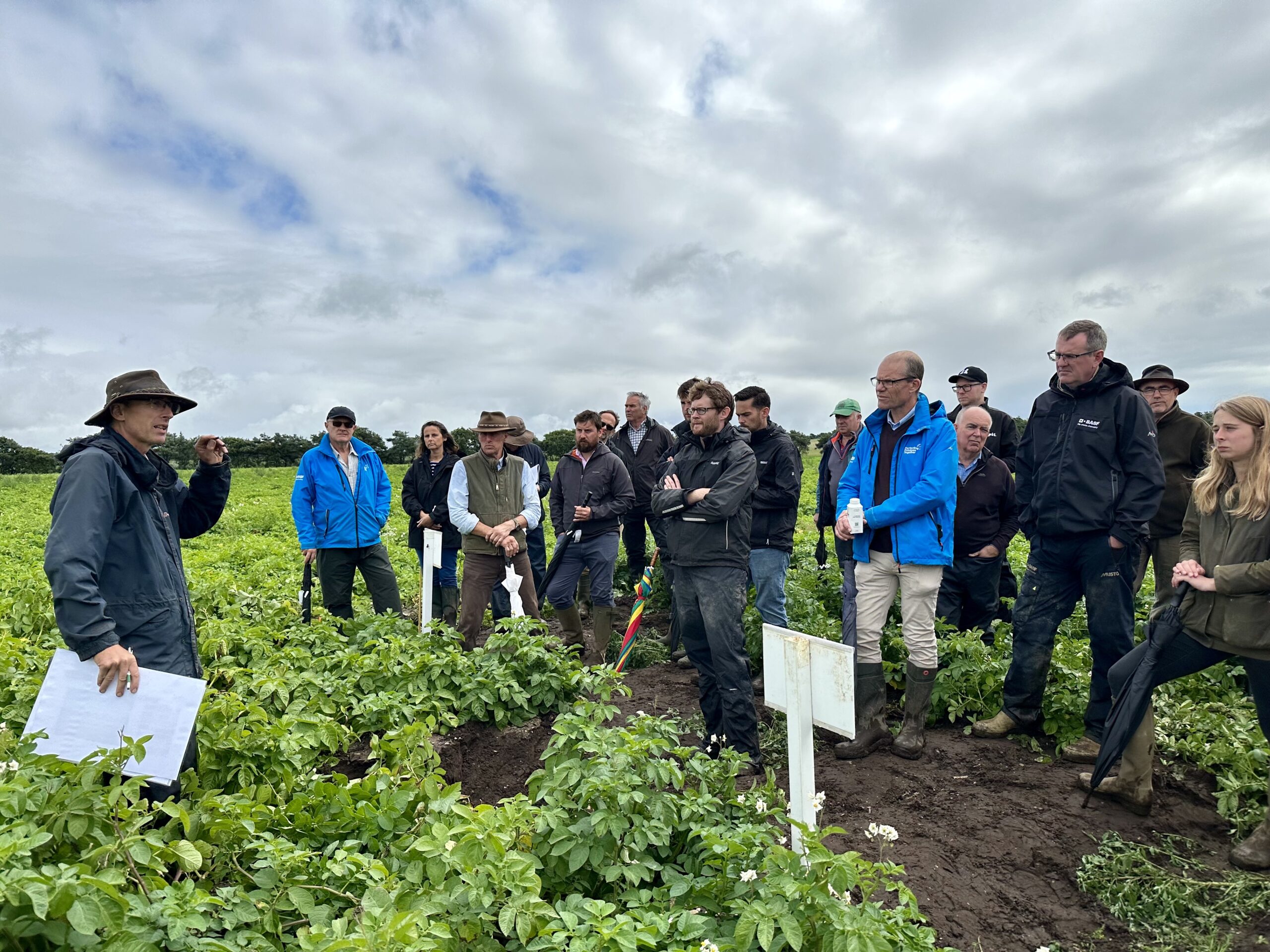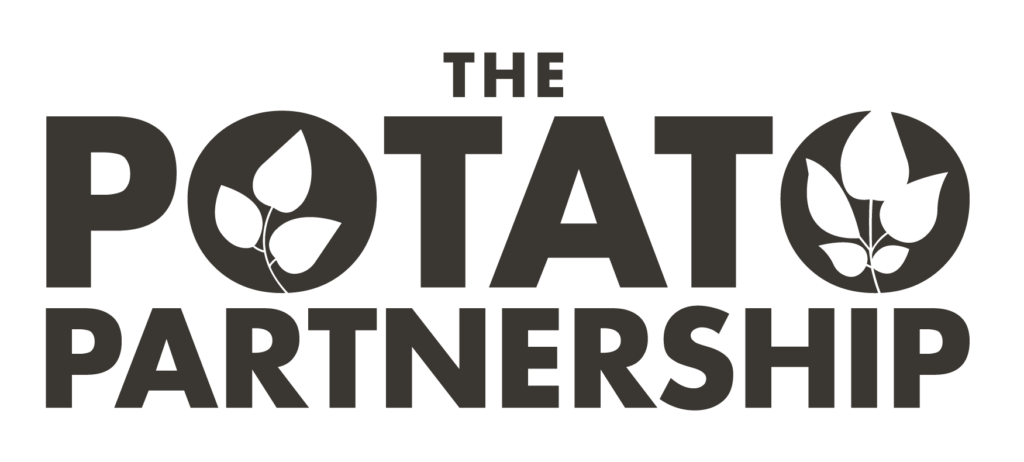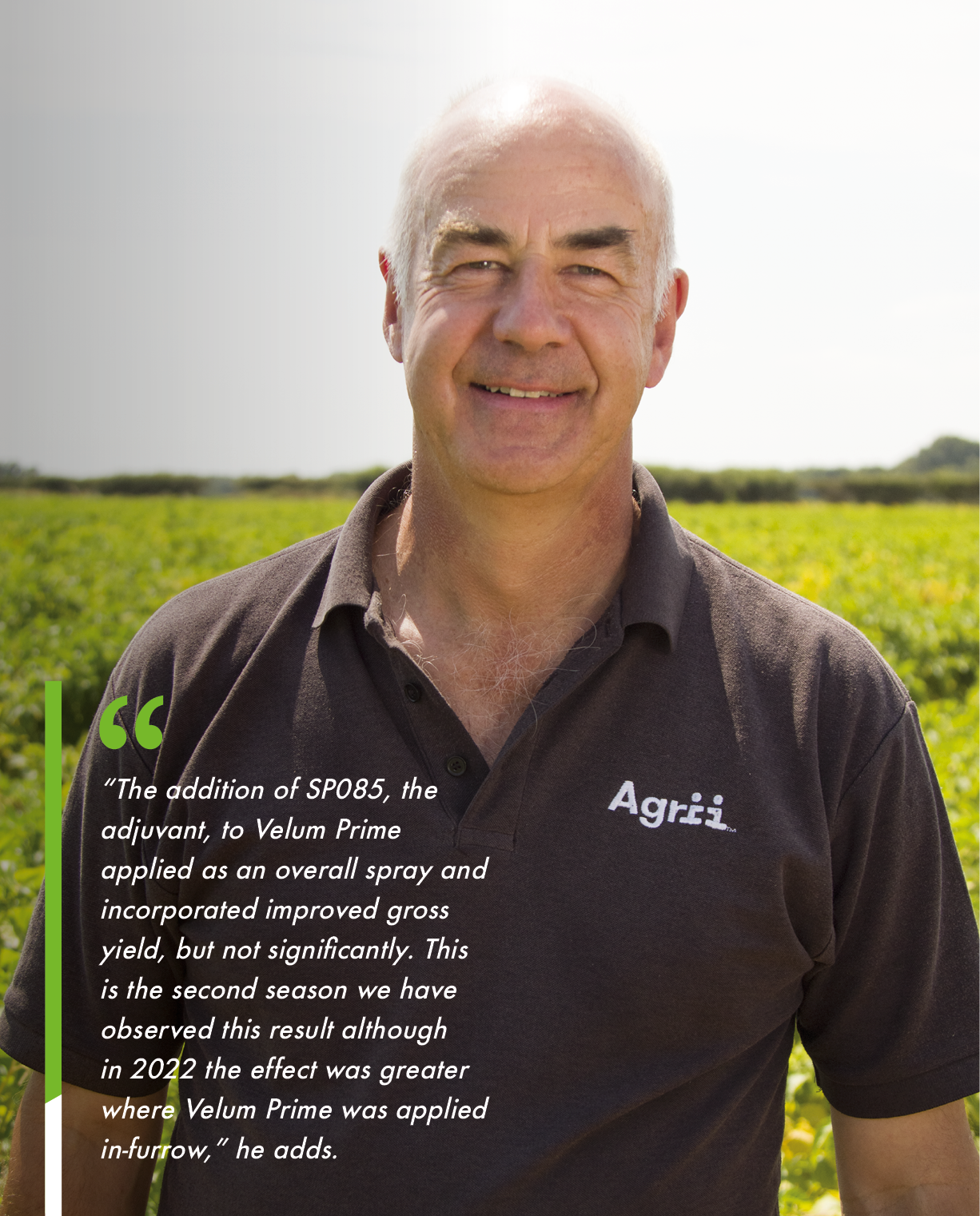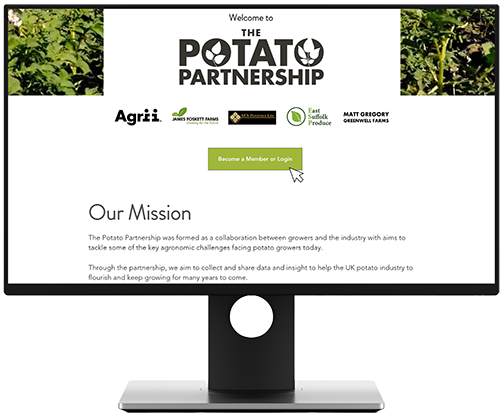Improving control of potato cyst nematodes (PCN) and wireworm is a focus for The Potato Partnership. Results from two years of trials highlight the fallacy of relying on nematicides as a sole means of protection.

Aug 22, Woodbridge (Suffolk)
Applying the granular nematicide Nemathorin (fosthiazate) at half rate and in sequence with Velum Prime (fluopyram) delivered yields comparable to that of full-rate Nemathorin alone, in PCN control trials run by The Potato Partnership (TPP). This is the second year where the combination of the two products has delivered yield protection equal to that of full-rate Nemathorin, says Nick Winmill, Technical, Research and Development Manager for Potatoes. The addition of a silicone-based adjuvant to Velum Prime was also found to increase yields, albeit not significantly.

“This is a compelling result. Manufacturer trials have sought to promote the performance of Velum Prime in sequence with Nemathorin, but there were some who were sceptical. We have shown that by using the two products in unison, yields can be maintained. This is good news should product renewal be granted at a reduced maximum application rate,” says Mr Winmill.
PCN is one of the most significant threats to the economically worthwhile production of potatoes. Identifying the measures needed to improve control has been a research focus for TPP for the past two years. Results so far confirm the superiority of Nemathorin in protecting yield potential, but with its regulatory approval set to expire before the end of the decade – possibly sooner if the Health & Safety Executive feels inclined to follow the path of the European Commission – the need for new methods of control is exercising researchers, advisers, and growers.

Technical, Research and Development Manager for Potatoes
TPP represents a collaborative endeavour between James Foskett Farms, growers and staff of East Suffolk Produce, CUPGRA, Agrii and independent agronomist, Graham Tomalin. It has sought to use the products and tools available to overcome the challenges threatening the sector. This is less about evaluating new or old products in isolation, explains Mr Winmill, but about seeing them as part of an integrated approach that considers cultural controls in the context of the situation.
“It is beholden on us to identify and develop solutions to these challenges that consider all available means rather than relying on one or more products. We need holistic solutions to these problems. These trials are part of our efforts to identify them,” he says. For the second year, TPP trials have investigated how to improve the performance of Velum Prime as part of an integrated programme. In standalone trials, Velum Prime has delivered 50-60% of the yield protection afforded by Nemathorin, but those within the TPP are of the opinion that this could be improved if it is combined with other products and greater application of cultural measures, such as wider use of varieties with better resistance and tolerance.
In 2022, the treatment trial took place on a site with a PCN population that was 100% Globodera rostochiensis with an egg count that ranged from 9.9 to 38.3 eggs/gram of soil. In 2023, a separate site with a population that was 100% G. pallida was selected with an egg count of 2 to 29 eggs/gram of soil. In both years, the site was planted with Maris Peer.
“The top three performing treatments for both gross yield and marketable yield all included Nemathorin, this was either alone at full rate or at half-rate in sequence with Velum Prime with or without the inclusion of SP058 (a siliconebased adjuvant). It underlines the importance of fosthiazate in protecting the economic viability of maincrop potatoes until we can find a more sustainable answer,” says Mr Winmill.
Importantly, the same treatments that delivered the highest yields also gave the lowest multiplication values.
“It is disappointing that all treatments resulted in a post-crop population increase. This confirms the accepted opinion that varietal resistance is the best means of controlling populations for the long-term. Unfortunately, commercially accepted varieties that exhibit resistance to both G. pallida and G. rostochiensis remain elusive,” says Mr Winmill.
Key points
- Mixing Velum Prime with a 50% dose of Nemathorin delivers comparable yields to full-rate Nemathorin alone
- The addition of SP058 (a silicone-based adjuvant) improves the performance of Velum Prime
- All treatments resulted in a post-crop PCN population increase
An area of further investigation is the use of a foliar-applied plant elicitor applied with the intention of improving crop health in the presence of PCN. This was applied at full crop emergence, but Mr Winmill says this may not be the best timing to fully exploit its contribution.
“Given what we know about G. pallida and its hatching duration of up to 18 weeks is it fair to expect a foliar spray at crop emergence to support long-lasting action? Perhaps a more logical approach would be to apply a followup spray or in sequence with a conventional nematicide at the eight-week point when activity begins to fall away?” says Mr Winmill.
“The addition of SP085, the adjuvant, to Velum Prime applied as an overall spray and incorporated improved gross yield, but not significantly. This is the second season we have observed this result although in 2022 the effect was greater where Velum Prime was applied in-furrow,” he adds.



